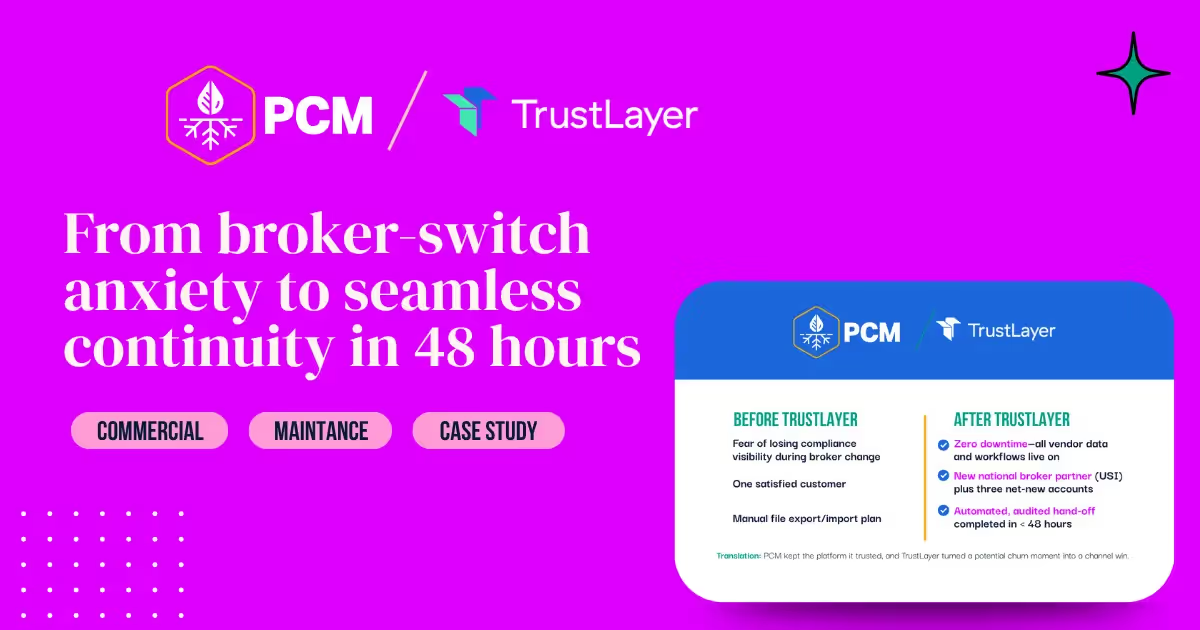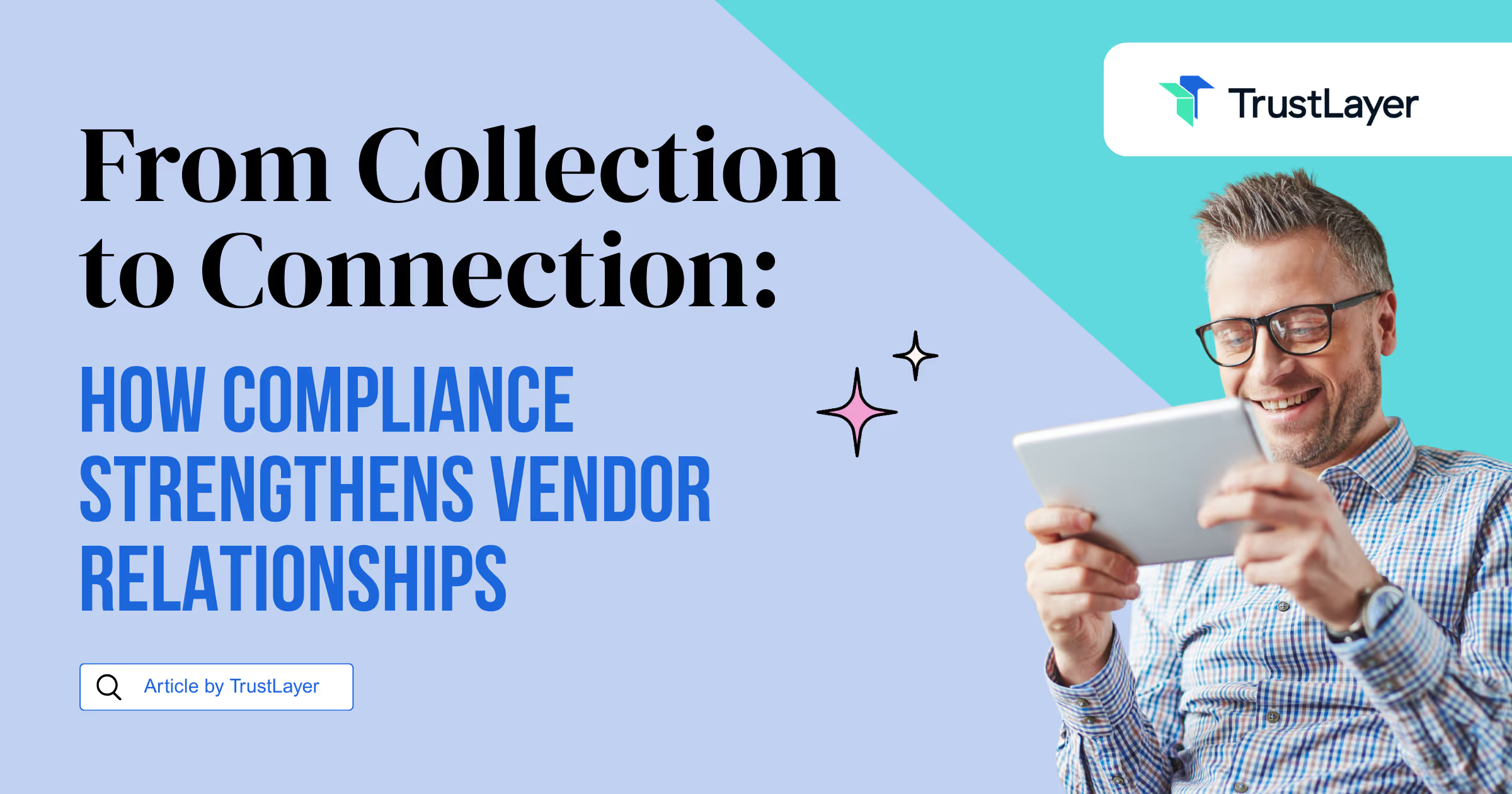Best Practices for Implementing Digital Proof of Insurance

In today's digital age, the insurance industry is undergoing a significant transformation. One particular change that has gained momentum is the shift towards digital proof of insurance. In this article, we will explore the best practices for implementing digital proof of insurance and how it can revolutionize the way businesses operate.
Understanding Digital Proof of Insurance
Before delving into the implementation process, it's essential to grasp the definition and importance of digital proof of insurance. Digital proof of insurance refers to the electronic documentation that verifies a policyholder's coverage. It replaces the traditional paper documents, streamlining the verification process and increasing efficiency.
Definition and Importance of Digital Proof of Insurance
It's crucial to understand what digital proof of insurance entails and why it holds so much value. Digital proof of insurance is a digital representation of an insurance policy or certificate of insurance. It includes policy details, coverage limits, effective dates, and any amendments. It eliminates the need for physical paperwork, reducing administrative burden and enabling faster verification processes.
Furthermore, digital proof of insurance offers several advantages over its paper counterpart. Firstly, it provides policyholders with easy access to their insurance information at any time and from anywhere. This accessibility allows for quick reference and peace of mind, especially in urgent situations where immediate proof of coverage is required.
Secondly, digital proof of insurance enhances data accuracy and security. With paper documents, there is always a risk of loss, damage, or tampering. However, digital documentation can be securely stored and encrypted, ensuring the integrity and confidentiality of the information. This level of security is particularly important when dealing with sensitive personal or business data.
Moreover, the adoption of digital proof of insurance aligns with the growing trend of digitization in various industries. As businesses increasingly rely on technology to streamline operations, digital documentation becomes a natural progression. It allows for seamless integration with other digital systems, such as online platforms, mobile applications, and automated workflows.
The Role of Digital Proof of Insurance in Modern Business
In today's fast-paced business environment, time is of the essence. Digital proof of insurance plays a crucial role in expediting processes and minimizing delays. With digital documentation readily accessible, businesses can instantly verify insurance coverage, reducing risks associated with non-compliance and potential liability.
Furthermore, digital proof of insurance facilitates smoother interactions between businesses and their clients. Instead of relying on physical documents that may get lost or delayed in the mail, policyholders can easily share their digital proof of insurance via email or secure online portals. This convenience enhances customer satisfaction and improves overall service efficiency.
Additionally, digital proof of insurance enables businesses to automate various tasks and workflows. For instance, insurance companies can integrate digital proof of insurance with their claims processing systems, enabling faster and more accurate claims adjudication. This automation not only saves time but also reduces the likelihood of errors and improves overall operational efficiency.
Moreover, the use of digital proof of insurance aligns with environmental sustainability goals. By eliminating the need for paper documents, businesses can contribute to reducing paper waste and the associated environmental impact. This shift towards digital processes supports a greener and more sustainable future.
In conclusion, digital proof of insurance offers numerous benefits to both policyholders and businesses. Its convenience, security, and efficiency make it a valuable tool in today's digital age. As technology continues to advance, the adoption of digital proof of insurance is likely to become even more prevalent, revolutionizing the insurance industry and improving customer experiences.
Preparing for the Transition to Digital Proof of Insurance
Transitioning from a paper-based insurance verification process to a digital solution requires careful planning and consideration. To ensure a successful transition, it is necessary to evaluate your current insurance verification process and identify key stakeholders in the transition.
Evaluating Your Current Insurance Verification Process
Begin by assessing the strengths and weaknesses of your existing insurance verification process. Determine how transitioning to digital proof of insurance can address any pain points and streamline operations. Consider factors such as time-consuming paperwork, potential errors in manual verification, and the need for seamless integration with existing systems.
One of the main advantages of transitioning to digital proof of insurance is the elimination of time-consuming paperwork. With a digital solution, you can say goodbye to the hassle of printing, mailing, and storing physical insurance documents. Instead, you can easily access and share digital insurance proof with just a few clicks.
In addition to reducing paperwork, digital proof of insurance also minimizes the risk of errors in manual verification. With manual processes, there is always a chance of human error, whether it's misreading a document or entering incorrect information. By implementing a digital solution, you can automate the verification process, reducing the likelihood of mistakes and ensuring accurate insurance verification.
Furthermore, transitioning to digital proof of insurance allows for seamless integration with existing systems. Whether you have an in-house insurance management system or use third-party software, a digital solution can be tailored to integrate with your current infrastructure. This integration enables a smooth flow of information, eliminating the need for manual data entry and ensuring data consistency across different platforms.
Identifying Key Stakeholders in the Transition
Achieving a smooth transition requires collaboration and support from various departments and individuals within your organization. Identify key stakeholders, such as risk managers, operations teams, IT personnel, and decision-makers. Engage them early in the process to ensure their buy-in and participation in implementing the digital proof of insurance solution.
Risk managers play a crucial role in the transition to digital proof of insurance. They are responsible for assessing and managing potential risks associated with the new system. By involving risk managers from the beginning, you can identify and address any potential risks or compliance issues, ensuring a secure and compliant digital insurance verification process.
Operations teams are another important group of stakeholders. They are the ones who will be directly involved in the day-to-day operations of the digital proof of insurance system. Engage them early on to understand their needs and challenges, and involve them in the decision-making process. Their input will be valuable in designing a system that meets their operational requirements and improves efficiency.
IT personnel are essential in implementing the digital proof of insurance solution. They will be responsible for integrating the new system with existing infrastructure, ensuring data security, and providing technical support. Involving IT personnel from the beginning will help identify any technical constraints or compatibility issues and ensure a smooth implementation process.
Lastly, decision-makers, such as executives and managers, need to be engaged and informed about the benefits and impact of transitioning to digital proof of insurance. They hold the authority to allocate resources and make strategic decisions. By involving decision-makers early on, you can gain their support and secure the necessary resources for a successful transition.
Choosing the Right Digital Proof of Insurance Solution
Choosing the right digital proof of insurance solution is critical to the success of your implementation. With the increasing digitization of insurance processes, having a reliable and efficient solution is essential for businesses of all sizes. Whether you are an insurance agency, a policyholder, or a third-party verifier, finding the right solution can streamline your operations and improve customer satisfaction.
When evaluating potential solutions, look for features that align with your organization's needs. These features can vary depending on your specific requirements, but there are some key features that you should consider:
Real-time Insurance Verification
One of the most important features to look for in a digital proof of insurance solution is real-time verification. This ensures that the information provided is up-to-date and accurate. With real-time verification, you can instantly validate the insurance status of a policyholder, reducing the risk of fraudulent claims and ensuring compliance with regulatory requirements.
Automated Updates and Notifications
Another crucial feature is automated updates and notifications. This allows policyholders and verifiers to receive timely updates regarding policy changes, renewals, and cancellations. By automating these processes, you can eliminate the need for manual follow-ups and reduce administrative burden.
Digital Certificate Generation
A digital proof of insurance solution should also have the capability to generate digital certificates. These certificates serve as electronic versions of traditional paper documents and can be easily shared and accessed online. Digital certificates not only save time and resources but also provide a more convenient and environmentally friendly alternative to physical documents.
Seamless Integration with Existing Systems
Integration is another important consideration when choosing a digital proof of insurance solution. It should seamlessly integrate with your existing systems, such as policy management software, CRM systems, or mobile applications. This ensures a smooth transition and minimizes disruption to your current workflows.
Robust Security Measures
Security is paramount when dealing with sensitive insurance information. Look for a solution that employs robust security measures, such as encryption, secure data storage, and access controls. This will safeguard the confidentiality and integrity of your data, protecting both your organization and your customers.
While considering the features of a digital proof of insurance solution is crucial, it is equally important to assess the vendor's capabilities and credibility. Here are some factors to consider:
Proven Track Record
Ensure that the digital proof of insurance solution provider has a proven track record in the industry. Look for companies that have been in the market for a significant period and have a solid reputation. A long-standing presence indicates their ability to adapt to changing market needs and deliver reliable solutions.
Customer Reviews and Success Stories
Research customer reviews and success stories to gauge the vendor's performance and customer satisfaction. Look for testimonials from organizations similar to yours to understand how the solution has benefited them. Positive feedback and success stories are indicators of a vendor's credibility and the effectiveness of their solution.
Experience in Similar Implementations
Evaluate the vendor's experience in implementing solutions for businesses similar to yours. This demonstrates their understanding of your industry's unique requirements and challenges. A vendor with relevant experience is more likely to provide tailored solutions that address your specific needs.
TrustLayer is an industry-leading provider of digital proof of insurance solutions trusted by numerous organizations. With a comprehensive suite of features, seamless integration capabilities, and a proven track record, TrustLayer is well-equipped to meet the needs of businesses across various industries.
Implementing the Digital Proof of Insurance System
Planning and executing the implementation process effectively is essential to achieve a seamless transition to digital proof of insurance. This involves careful planning and comprehensive staff training.
When it comes to implementing a digital proof of insurance system, there are several key factors to consider. One of the first steps is to create a detailed implementation plan that outlines the necessary steps, milestones, and timelines. This plan will serve as a roadmap for the entire process, ensuring that everyone involved is on the same page and working towards the same goal.
Assigning roles and responsibilities is another crucial aspect of the implementation process. By clearly defining who is responsible for what, you can ensure that there is accountability and smooth execution. This will help to avoid any confusion or misunderstandings along the way.
In addition to creating a comprehensive plan and assigning roles, it is also important to consider conducting pilot tests. These tests can help to identify and rectify any potential issues before the full-scale implementation. By testing the system with a smaller group of users, you can gather valuable feedback and make any necessary adjustments to ensure a smooth transition for all users.
Training Staff on the New System
Properly training your staff on the new digital proof of insurance system is crucial to ensure its successful adoption. Without proper training, employees may struggle to navigate the new system, leading to frustration and potential errors.
When organizing training sessions, it is important to tailor them to different user groups. For example, risk managers may have different needs and requirements compared to customer service representatives or operations teams. By providing targeted training sessions, you can ensure that each user group receives the specific information and guidance they need to effectively use the new system.
Clear instructions and resources are also essential when training staff on a new system. Providing employees with step-by-step instructions, user manuals, and other resources can help them navigate the system confidently and efficiently. This will not only increase their productivity but also reduce the likelihood of errors or confusion.
Overall, implementing a digital proof of insurance system requires careful planning, effective execution, and comprehensive staff training. By following these steps and considering the specific needs of your organization, you can achieve a seamless transition to the new system and reap the benefits of digital proof of insurance.
Ensuring Compliance with Digital Proof of Insurance
Compliance with regulatory requirements is of utmost importance when implementing a digital proof of insurance system. Stay up to date with the evolving regulatory landscape and establish regular auditing and updating of the system to maintain compliance.
Understanding Regulatory Requirements
Each jurisdiction may have specific regulations governing digital proof of insurance. Familiarize yourself with these requirements, such as acceptable documentation formats and record-keeping obligations. Implement robust security measures to protect sensitive policyholder data and ensure compliance with data protection regulations.
Regular Auditing and Updating of the System
Digital proof of insurance systems should undergo periodic auditing to ensure compliance with both internal policies and regulatory standards. Regularly update the system to incorporate any changes in regulations or your organization's needs. This will help maintain accuracy and integrity in your insurance verification processes.
By implementing the best practices for digital proof of insurance, businesses can streamline their operations while ensuring compliance and reducing risks. TrustLayer offers a comprehensive digital proof of insurance solution trusted by businesses of all sizes. Embrace the digital shift and revolutionize your insurance verification process today.
















